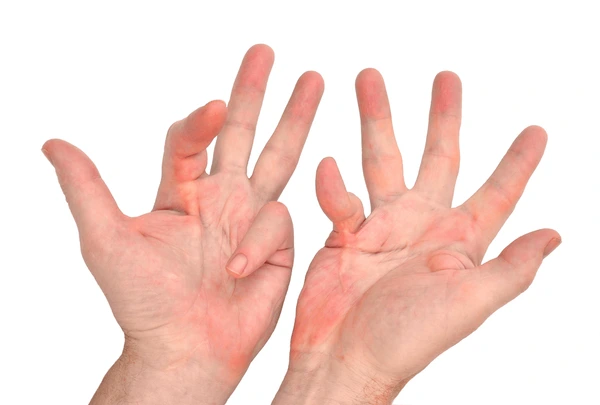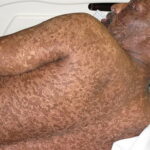What Is Dupuytren’s Contracture?
Dupuytren’s Contracture is a progressive condition affecting the connective tissue in the palm, causing the fingers to bend inward permanently. Over time, thickened fibrous cords form under the skin, restricting movement. This disorder primarily impacts the ring and little fingers but can affect any digit. While the condition is not typically painful, it significantly impairs hand function and quality of life.

Causes and Risk Factors
Although the exact cause remains unclear, Dupuytren’s Contracture is linked to genetic and environmental factors. Key risk factors include:
- Genetics – A strong hereditary component, particularly among individuals of Northern European descent.
- Age – Most common in people over 50.
- Gender – Men are more likely to develop severe contractures.
- Lifestyle Factors – Smoking and alcohol consumption may increase risk.
- Medical Conditions – Diabetes and epilepsy are associated with a higher prevalence of the condition.
Early Signs and Symptoms
The initial signs are subtle and progress gradually:
- Small Nodules in the Palm – Painless lumps develop, often near the base of the fingers.
- Formation of Cords – The tissue thickens and forms rope-like structures.
- Finger Contraction – The fingers become increasingly bent toward the palm.
- Reduced Hand Function – Gripping and everyday tasks become difficult.
Diagnosis and Medical Evaluation
A physical examination typically confirms the diagnosis. Physicians assess:
- The Hueston Tabletop Test – Patients try to place their hand flat on a table; inability to do so indicates contracture.
- Range of Motion – Evaluates flexibility and severity of finger contracture.
- Ultrasound or MRI – Occasionally used for deeper tissue analysis.
Treatment Options for Dupuytren’s Contracture
Non-Surgical Treatments
In mild cases, conservative treatments may slow progression:
- Steroid Injections – Reduces inflammation and slows contracture development.
- Collagenase Clostridium Histolyticum (Xiaflex) – An FDA-approved enzyme injection that breaks down cords.
- Needle Aponeurotomy (Percutaneous Needle Fasciotomy, PNF) – A minimally invasive procedure using needles to disrupt fibrous tissue.
- Physical Therapy – Hand exercises may improve flexibility and slow stiffness.
Surgical Intervention
For severe contractures, surgery may be required:
- Fasciectomy – Removal of affected tissue to release tension in the fingers.
- Dermofasciectomy – A more extensive surgery for severe cases, often requiring skin grafts.
Recovery and Rehabilitation
Post-treatment rehabilitation includes:
- Splinting – Keeps fingers extended and prevents recurrence.
- Hand Therapy – Strengthens hand muscles and restores function.
- Regular Monitoring – Ensures early detection of recurrence.
Can Dupuytren’s Contracture Be Prevented?
While there is no guaranteed prevention, reducing risk factors can help:
- Maintain a healthy lifestyle, avoiding smoking and excessive alcohol.
- Engage in regular hand-stretching exercises.
- Monitor early signs, especially with a family history of the condition.

